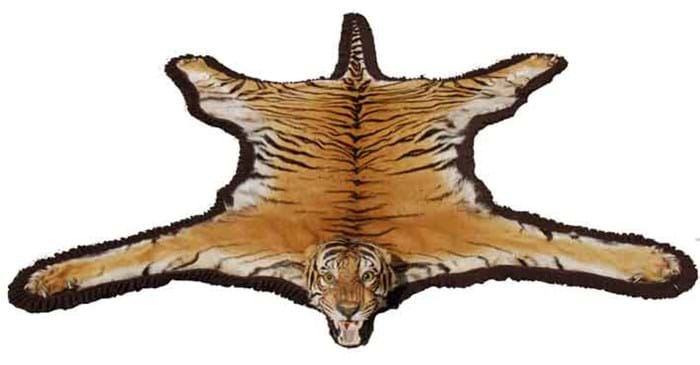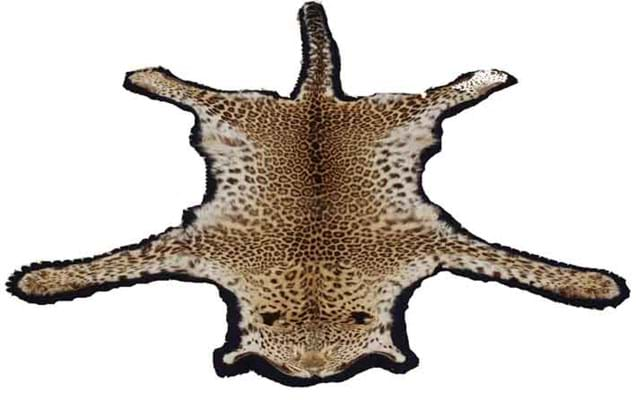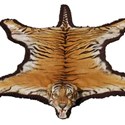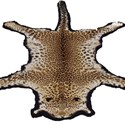The five 'big cat' skins offered by Andrew Smith & Son of Itchen Stoke, near Winchester, on June 12-13, were quite simply as good as they get.
Displayed on the high flint walls of the Manor Farm auction rooms, these were the second tranche of a Hampshire consignment of ten skins from two members of the genus panthera (five tigers, five leopards) shot in the late 1920s by an Indian Army officer based in the Assam province.
The elderly vendor, who had been able to produce a photograph of himself as a boy in north-west India in 1924 beside two lifeless tigers, explained that his father had not been a big-game hunter as such.
In his role as a medical officer, his quarry had been man-eaters or the animals which had posed a threat to the inhabitants of the village where he and his entourage were resident. Two Mysore taxidermists - Van Ingen & Van Ingen and Theobald Brothers - were engaged to treat and mount the ten hides, a task completed prior to 1931 when the family and their possessions returned to the UK.
Only one, a 9 x 6ft (2.74 x 1.83m) skin of a man-eating tiger shot in 1927 and mounted by Van Ingen & Van Ingen, sold at £4200, had been used in the family home. The other nine were relegated to the attic and there they remained, shielded from the effects of sunlight and moths, in the galvanised sea freight trunks in which they had made their passage from India.
A dealer who had successfully bought (and quickly sold on at a profit) the five skins offered in February returned to buy the quintet on offer here. His client is understood to be an interior decorator.
Key Name
Regular auction-goers will be familiar with the sums generated for the best skins carrying the magic name of Van Ingen & Van Ingen (1900-99) - the celebrated firm who, factory records attest, processed more than 43,000 tiger and leopard trophies in less than a century of operation. The current auction record for a tiger skin appears to be the 10ft 2in (3.1m) hide mounted by the firm c.1940 which sold at Christie's South Kensington in September 2009 for £14,500.
However, eight of the ten skins offered in Itchen Stoke were mounted by the Theobald Brothers, the Mysore contemporaries of Eugene Van Ingen and his sons, whose clientele stretched a little further than international nobility and Indian maharajas.
Their big-cat skins are frequently distinctive - mounted with ears pinned back and the beast adopting a snarling pose.
In February a large tiger skin by Theobald Brothers had sold for £4200, a price the auctioneers speculated might have been an auction record for this particular taxidermy workshop.
At the June sale a full-head tiger-skin rug in exceptional condition, with a fully lined backing, fabric trade label and the stencilled number 10661, sold at £5200 (estimate £1000-2000). It measured 8ft by 6ft 6in (2.44 x 1.98m).
Tiger skins are less desirable when mounted with flat heads - the example here by Van Ingen measured a massive 10ft 3in (3.1m) but sold at £1900 - while those with no head at all are further down the price scale still. The headless example by Theobald Brothers offered in February took £950.
The two leopard-skin rugs sold in June, both by Theobold Brothers, commanded less spectacular prices. The full-head mount measuring 7ft 7in x 5ft 5in (2.31 x 1.65m) took £650 (estimate £300-500), while a flat-headed mount of similar length but 8ft (2.44m) wide brought £420 (estimate £300-500).
Given the nature of the consignment, the vendor has been reluctant to divulge his father's name in the catalogue, although the name of this heavily-decorated Indian Army medical officer may be revealed in a future sale when the auctioneers sell the contents of a further trunk - three full military dress uniforms untouched since the 1930s.
The buyer's premium was 18%.








